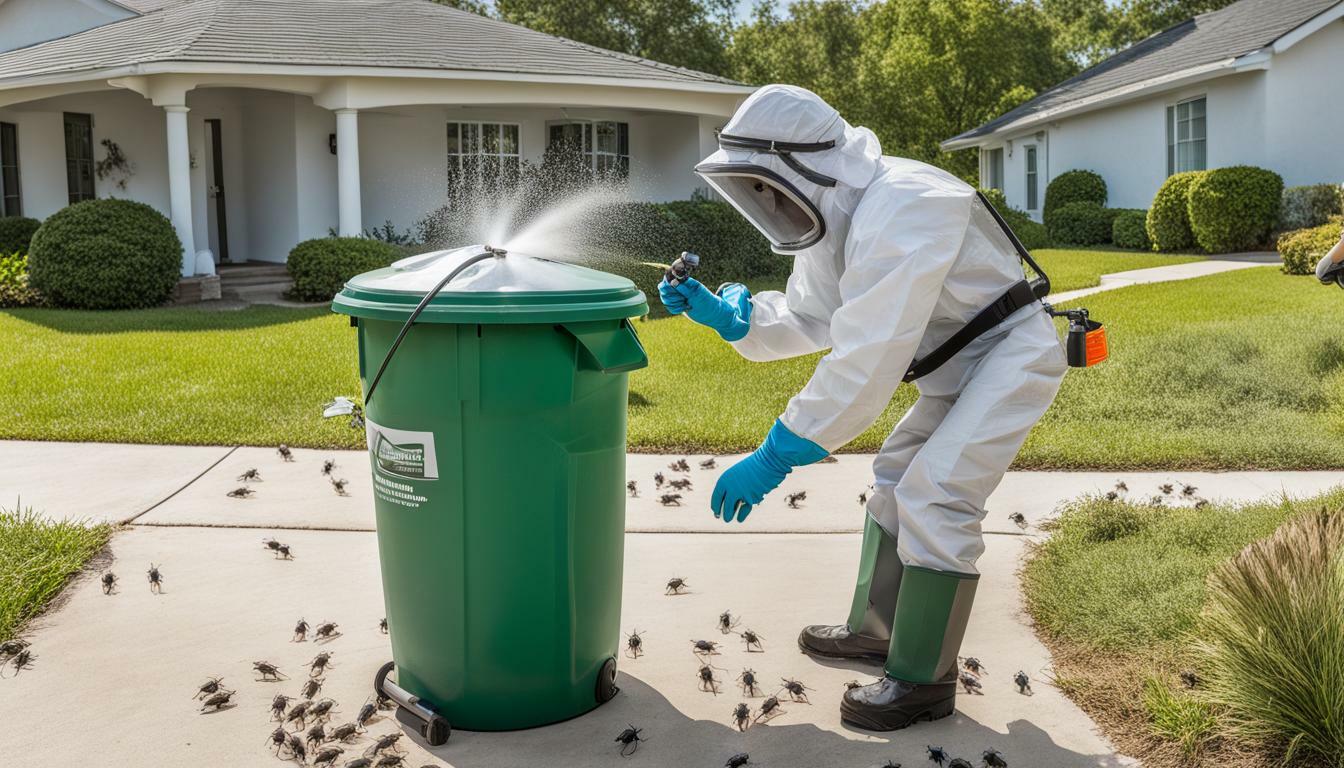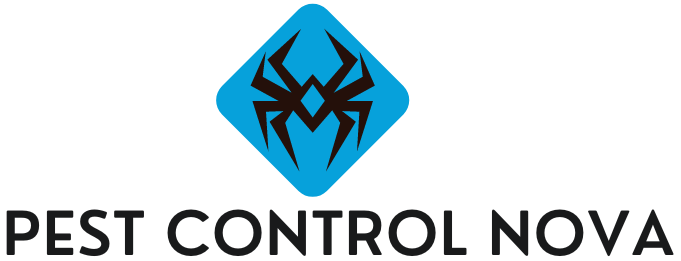
Flies can be a nuisance both indoors and outdoors, and their presence can pose health risks. Many people wonder if pest control methods can help get rid of flies. In this section, I will explore the effectiveness of pest control methods in eliminating flies and provide insights on the topic.
Key Takeaways:
- Pest control can effectively get rid of flies.
- There are various methods of pest control for flies, including traps, insecticides, and professional services.
- It’s important to consider the behavior of flies and the advantages and disadvantages of different approaches.
Understanding the Behavior of Flies
Before considering pest control options, it’s important to understand the behavior and habits of flies. Understanding their behavior can help in developing an effective pest control strategy.
Flies are common in environments where there is food, moisture, and warm temperatures. It’s crucial to identify the factors that contribute to fly infestations, such as poor sanitation, uncovered food, or standing water.
Flies have a short lifespan, ranging from a few days to a couple of months, depending on the species and environmental conditions. Females lay their eggs in organic matter such as garbage, manure, or decaying food. Once the eggs hatch, the larvae feed on the organic matter and eventually transform into adult flies.
Flies are active during the day and prefer warm temperatures. They are attracted to odors and moisture, which is why they are commonly found in and around kitchens, bathrooms, and garbage areas.
It’s essential to identify the breeding sites of flies and remove the sources of attraction. For example, regularly cleaning and disinfecting garbage areas, covering food, and keeping surfaces dry can help reduce the likelihood of fly infestations.
Common Pest Control Methods for Flies
When it comes to fly control, there are several effective pest control methods that can be employed. These include:
- Fly Traps: These can be used both indoors and outdoors to lure and capture flies. There are different types of fly traps, such as sticky traps or baited traps, that work by attracting and trapping flies.
- Insecticides: These can be applied as sprays, baits or traps. Insecticides can be highly effective in eliminating flies, but it’s important to follow instructions carefully to avoid exposing humans and pets to harmful chemicals.
- Professional Pest Control Services: Hiring a professional pest control service can be a helpful solution to a chronic fly infestation. Professionals have access to specialized equipment and knowledge to identify and treat the root cause of fly infestations.
It’s important to note that each of these methods has its advantages and disadvantages. While fly traps can be effective in capturing flies, they may not target the root cause of the infestation. Insecticides may pose potential risks to human and animal health and the environment. Professional pest control services can provide a more comprehensive approach to fly control, but may come at a higher cost.
Advantages and Disadvantages of Pest Control for Flies
As with any pest control method, there are both advantages and disadvantages to using pest control for fly control. While some methods yield immediate results, others require a more holistic and long-term approach. In this section, I will discuss the pros and cons of pest control for flies, environmentally friendly pest control, and the potential risks of pesticide use.
Pros of Pest Control for Flies
One of the main advantages of using pest control methods for fly control is the ability to quickly reduce fly populations. Fly traps and insecticides can provide immediate relief from fly infestations, which can be especially important for businesses or households operating in sensitive environments such as food processing plants or hospitals.
Professional pest control services can also provide a more targeted and efficient approach to fly control. By identifying breeding areas and implementing prevention measures, pest control professionals can not only eliminate existing fly populations but also prevent new ones from forming.
Cons of Pest Control for Flies
The potential risks associated with pesticide use are one of the main disadvantages of using pest control methods for fly control. The indiscriminate use of pesticides can harm beneficial insects, wildlife, and even humans. Additionally, pesticide resistance can develop over time, rendering certain products ineffective.
Environmentally friendly pest control methods are becoming more common for fly control. One example is the use of biological agents, such as parasitic wasps, to target fly larvae. While these methods may take longer to achieve results, they are less harmful to the environment and pose minimal risk to non-target species.
Potential Risks of Pesticide Use
When using insecticides to control flies, it’s important to follow all instructions carefully and take necessary precautions to avoid unnecessary exposure. Pesticide exposure can cause a range of health effects, including skin and eye irritation, headaches, and nausea. Pesticides can also end up in waterways, potentially harming aquatic life and contaminating drinking water.
Ultimately, choosing a pest control method for fly control will depend on individual circumstances and preferences. By considering the advantages and disadvantages of each option, adopting environmentally friendly pest control alternatives, and following necessary precautions when using pesticides, it’s possible to effectively control fly populations without causing harm to the environment or human health.
Integrated Pest Management for Fly Control
When it comes to fly control, a holistic approach is often the most effective method. Integrated Pest Management (IPM) is a comprehensive strategy that combines monitoring, prevention, and targeted strategies to manage fly populations. This approach can be used in both residential and commercial settings and can help prevent future fly infestations.
IPM emphasizes the importance of monitoring and prevention to reduce the need for chemical pesticides. This approach can be implemented by hiring a professional pest control service or by taking proactive measures on your own. Monitoring involves regularly checking for signs of fly activity, such as fly sightings or breeding sites. Prevention measures include proper sanitation practices, sealing cracks and crevices, and reducing standing water sources.
Fly control strategies used in IPM can include biological control methods, such as introducing natural predators like parasitic wasps or deploying pheromone traps. Chemical pesticides are also used, but only as a last resort and in targeted applications. This approach minimizes the impact on the environment and reduces the risk of pesticide resistance.
Overall, IPM provides a comprehensive and sustainable approach to fly control. By combining monitoring, prevention, and targeted strategies, it can effectively manage fly populations and prevent future infestations.
Tips for Fly Prevention and Management
Effective fly control requires a proactive approach that addresses the root causes of fly infestations. In this section, I will share some practical tips for fly prevention and management that you can implement in your environment.
Fly Prevention
Preventing flies from accessing your living or working space is the first step in controlling their population. Here are some essential practices you can adopt to keep the flies away:
- Improve your hygiene practices: Keep your surroundings clean, dispose of waste regularly, and avoid leaving food uncovered. Flies are attracted to unhygienic environments where they can find food and breeding grounds.
- Manage your waste: Dispose of trash promptly and clean out your garbage cans regularly. Flies breed in moist and decaying organic matter, so ensure that your waste is dry and inaccessible to them.
- Use screens and seals: Install screens on windows and doors to prevent flies from entering your premises. Also, ensure that any cracks or crevices in your walls are sealed to eliminate potential entry points for flies.
Fly Management
If you have a fly infestation, there are several additional measures you can take to manage their population:
- Use fly traps: Fly traps are an effective and affordable way to catch and kill flies. You can purchase them in stores or make DIY traps using sugar water or vinegar as bait.
- Use insecticides: Insecticides can eliminate flies quickly, but they can also be harmful to humans and pets. Consider the risks and benefits of using insecticides before resorting to them.
- Seek professional pest control services: If your fly infestation is severe, consider hiring professional pest control services. They have the expertise and tools to identify the underlying causes of your infestation and provide effective solutions.
By adopting these fly prevention and management practices, you can minimize the risk of fly infestations and create a cleaner and healthier environment for yourself and others.
Conclusion
Considering the behavior and habits of flies is crucial in choosing effective pest control methods. While various options are available, such as fly traps, insecticides, and professional pest control services, it’s essential to weigh the advantages and disadvantages of each.
Environmental concerns associated with pesticide use call for the adoption of integrated pest management techniques that combine monitoring, prevention, and targeted strategies. By implementing proactive measures such as proper hygiene practices, waste management, and the use of screens and seals, you can significantly reduce fly populations and minimize the need for pest control solutions.
Overall, fly control requires a combination of pest control methods and prevention practices to achieve long-term effectiveness and maintain a healthy environment. By taking a holistic approach, you can successfully manage and prevent fly infestations in your surroundings.
FAQ
Q: Can pest control get rid of flies?
A: Yes, pest control methods can effectively get rid of flies. By using various techniques such as fly traps, insecticides, and professional pest control services, you can effectively eliminate fly infestations.
Q: What should I know about the behavior of flies?
A: Understanding the behavior of flies is important when considering pest control options. Fly behavior includes their breeding habits and factors that contribute to fly infestations.
Q: What are some common pest control methods for flies?
A: Common pest control methods for flies include fly traps, the use of insecticides, and hiring professional pest control services. Each method has its own benefits and effectiveness in eliminating flies.
Q: What are the advantages and disadvantages of pest control for flies?
A: It’s important to consider the advantages and disadvantages of using pest control methods for fly infestations. While pest control can effectively eliminate flies, there are potential risks associated with pesticide use. Exploring environmentally friendly alternatives is also essential.
Q: What is integrated pest management for fly control?
A: Integrated Pest Management (IPM) offers a holistic approach to fly control by combining monitoring, prevention, and targeted strategies. By adopting an IPM approach, you can effectively manage fly populations.
Q: What are some tips for fly prevention and management?
A: In addition to pest control methods, proactive measures can help prevent and manage flies. Tips for fly prevention include practicing proper hygiene, effective waste management, and using screens and seals to keep flies out.
- Does Flea Treatment Kill Lice? - September 8, 2023
- Does Flea Treatment Kill Mites? - September 8, 2023
- How to Put Flea Treatment on a Dog? - September 8, 2023






